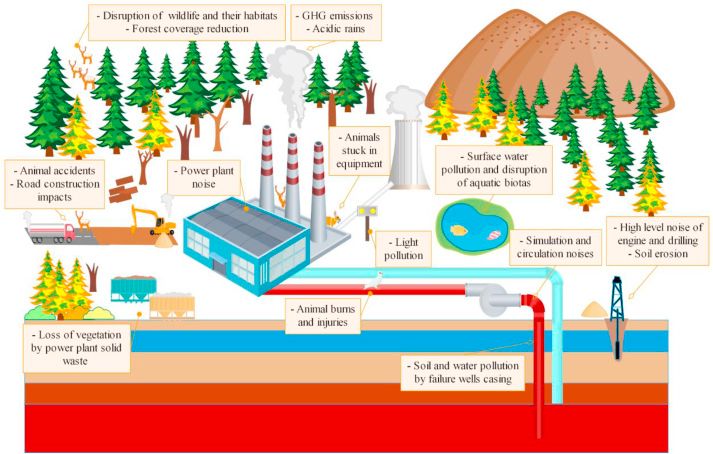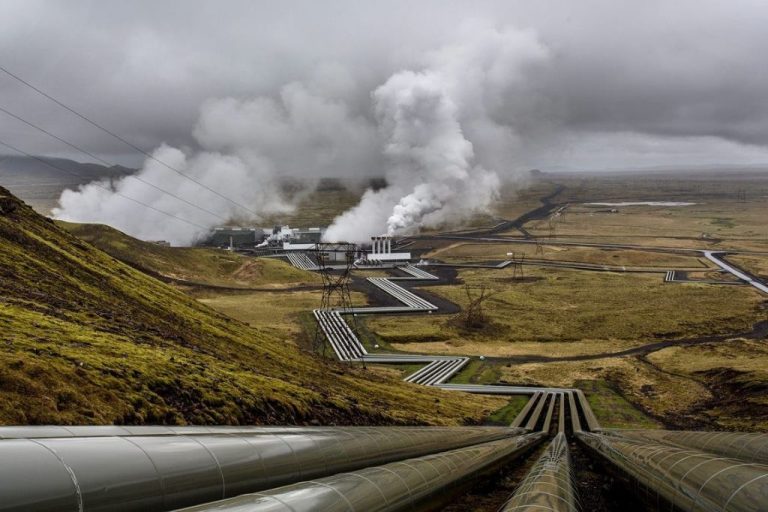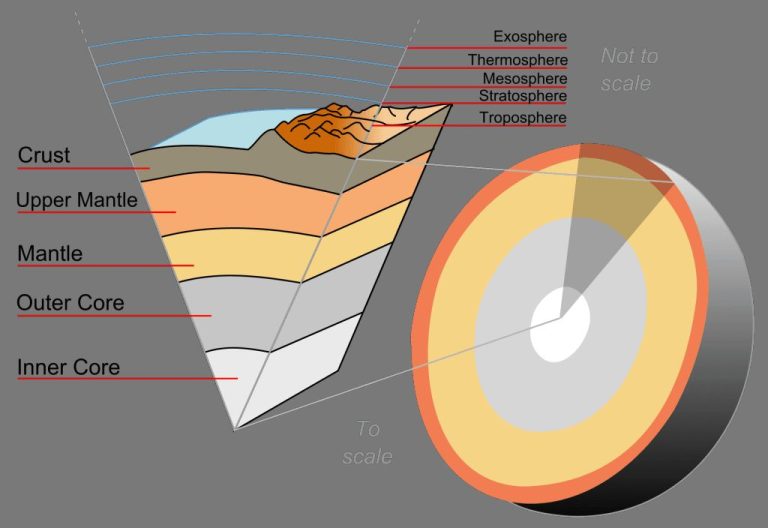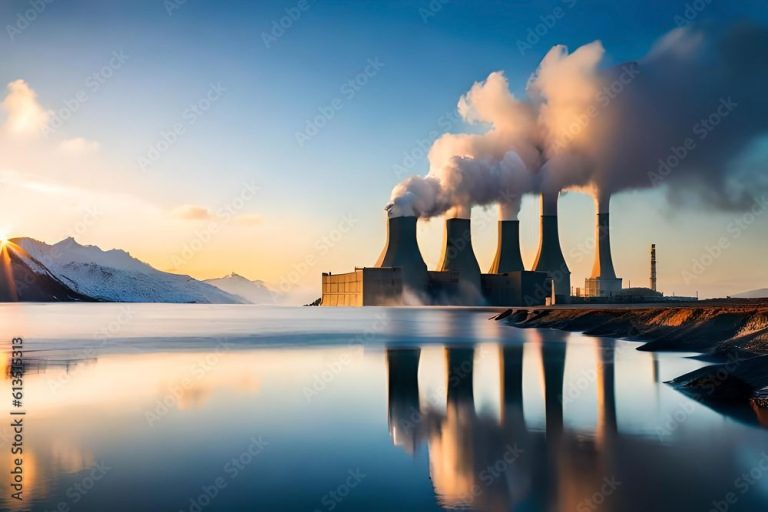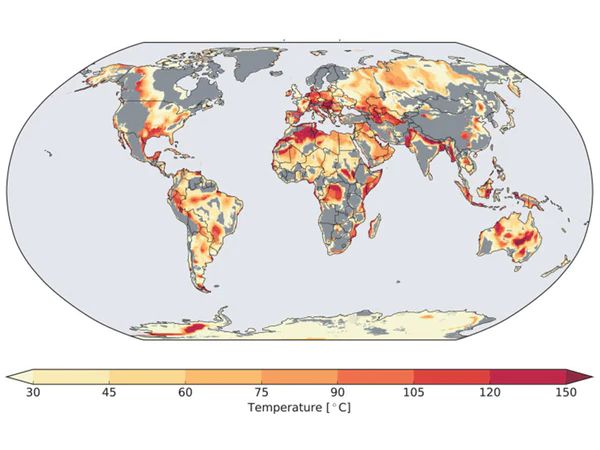How Much Geothermal Energy Is Currently Available?
Geothermal energy is heat derived from the earth’s core and mantle. It is a renewable energy source that comes from hot water and rock deep beneath the earth’s surface and volcanically-active areas. Geothermal energy harnesses the internal heat energy of the planet to generate electricity and provide direct heating and cooling.
Some key use cases of geothermal energy include generating electricity through geothermal power plants, directly heating buildings and greenhouses through geothermal heat pumps, and heating water. It is considered a clean, sustainable energy source.
This article will provide an overview of geothermal energy by covering the current use of geothermal power plants and direct applications, types of geothermal resources, total potential capacity, challenges, future outlook, and major industry players.
Geothermal Power Plants
According to the 2021 report from the National Renewable Energy Laboratory (NREL), there are currently 93 geothermal power plants in the United States with a total installed capacity of 3,673 megawatts (MW) [1]. The majority of the installed geothermal capacity is located in California and Nevada, with 30 and 15 plants respectively [2].
Globally, there are over 200 geothermal power plants located in 27 countries with a total installed capacity of around 15,000 MW as of 2021. The countries with the largest geothermal capacity are the United States, Indonesia, Philippines, New Zealand, Mexico, Italy, Turkey, Iceland, Kenya and Japan [3]. The largest geothermal power plants are located at The Geysers in California, Cerro Prieto in Mexico, and Darajat in Indonesia, each with over 500 MW of installed capacity.
Direct Use Applications
Direct geothermal resources provide energy for applications like space heating and cooling, greenhouse heating, industrial processing, and hot water without the need for converting the heat energy into electricity first (Geothermal Energy – Direct-Use, 2022). While geothermal energy is best known for its use in power generation, direct use applications have grown substantially over the past few decades. Direct geothermal heat is used in over 80 countries worldwide (Geothermal Direct Use, 2022).
Some of the major direct uses of geothermal energy include:
- Space heating and cooling – Geothermal heat pumps can provide heating and air conditioning for buildings.
- Greenhouse heating – Geothermal fluids provide consistent heating for greenhouse operations, increasing crop yields.
- Aquaculture – Fish farming and alligator farms use geothermal fluids for consistent heating.
- Industrial uses – Geothermal steam and hot water are used in industrial processes like paper pulp processing, laundry washing, milk pasteurization, and gold mining.
- Bathing and swimming – Geothermal hot springs and mineral water spas are popular tourist attractions worldwide.
- Agricultural drying – Grains, fruits, and vegetables are dried using geothermal heat.
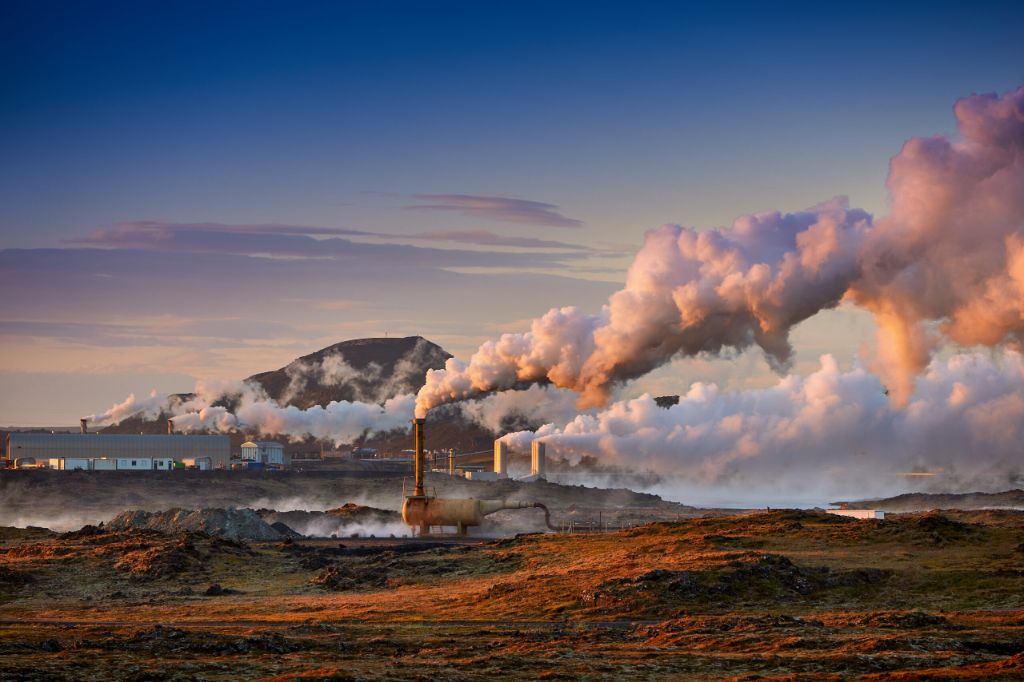
In 2015, the worldwide annual energy use for direct geothermal applications was estimated at 313.5 petajoules (87 TWh), with over 68% occurring in China, Turkey, Iceland, Japan, Hungary, and the United States (Lund and Toth, 2020). Significant potential remains to expand the use of geothermal energy for direct heating applications globally.
Conventional Hydrothermal Resources
Conventional hydrothermal resources refer to geothermal reservoirs of naturally occurring hot water and steam located at accessible depths that can be brought to the surface and used directly for heating applications or electricity generation [1]. These resources are considered “conventional” because their heat comes from shallow magmatic activity and they contain all the necessary natural components – heat, fluid, and permeability – to sustain energy production[2].
Globally, the technical potential of conventional hydrothermal resources for electricity generation is estimated to be about 200 GWe, with about 20 GWe currently installed capacity. In the United States, the identified hydrothermal resource base is over 30 GWe, but much more remains undiscovered. Conventional hydrothermal resources have the potential to provide 100 GWe of base-load electric power in the US for the next 30 years or more[2].
Unconventional Resources
One type of unconventional geothermal resource is called an Enhanced Geothermal System (EGS). EGS refers to engineered reservoirs that have been created to extract heat from geothermal resources lacking adequate water and/or permeability to be considered a viable hydrothermal resource (Department of Energy). In an EGS, fluid is injected into hot basement rock to extract heat and create a geothermal reservoir.
EGS has the potential to greatly expand the world’s geothermal resource base. According to estimates by the Department of Energy, EGS technical potential amounts to over 500,000 MW globally, which represents a 26-fold increase over conventional hydrothermal power (Department of Energy). EGS technical potential in the western U.S. alone could potentially power the entire country. However, EGS systems face challenges related to reservoir creation and management that need to be overcome to unlock this vast potential geothermal resource.
Total Potential
Combining the estimates from conventional hydrothermal, EGS, and direct use applications gives a total potential geothermal resource base of hundreds of thousands to millions of terawatt-hours per year. According to the US Geological Survey, identified hydrothermal resources in the western US alone could provide over 60,000 MW of power generation capacity. With additional undiscovered resources and the potential of EGS, the geothermal capacity in the US could conceivably be 100 times larger. Direct use applications are estimated to have 26,000 MWt of installed capacity. The global potential is likely much greater still, especially in areas with significant volcanic activity.
The key point is that only a tiny fraction of the total geothermal resource base is currently utilized. With continued exploration, technological improvements, and enabling policies, significantly more geothermal energy can likely be tapped in the coming decades. Both baseload power generation and direct use applications have enormous room for growth globally.
Challenges
While geothermal energy has many benefits, it also comes with some notable challenges and drawbacks that have limited more widespread adoption. Some of the main challenges with geothermal energy include:
High Upfront Costs
Constructing a geothermal power plant requires substantial upfront capital investment. Exploratory drilling and resource confirmation alone can cost millions of dollars, with no guarantee of finding a usable resource. If a site proves viable, building the power plant and drilling production wells
can cost hundreds of millions more.[1] These high costs and risks make financing geothermal projects difficult.
Location Constraints
Geothermal energy potential is not evenly distributed, and ideal sites are limited. Resources are concentrated in geologically active areas, like Western North America or countries along the Pacific “Ring of Fire.” This geographic restriction means geothermal cannot provide consistent baseload power across all regions.[2]
Sustainability Concerns
There is some concern that extracting heat faster than it can be replenished may deplete geothermal reservoirs over time. Careful reservoir management is needed to ensure long-term sustainability. Technologies like enhanced geothermal systems may carry higher depletion risks.[3]
While costs are coming down and technology improving, these challenges continue to limit broad adoption of geothermal energy.
[1] https://www.rff.org/publications/explainers/geothermal-energy-101/
[2] https://www.twi-global.com/technical-knowledge/faqs/geothermal-energy/pros-and-cons
[3] https://sites.lafayette.edu/egrs352-sp14-geothermal/general-information/challenges/
Future Outlook
The future outlook for geothermal energy is promising, with projections for significant growth globally. According to a report from the U.S. Department of Energy, geothermal power generation could increase more than 26-fold from 2015 to 2050, reaching 60 gigawatts of installed capacity and more than 260 terawatt-hours of annual generation. The industry is expected to see sustained growth as more conventional and enhanced geothermal systems come online. The Future of Geothermal Energy.
Enhanced geothermal systems (EGS) represent an exciting area of innovation, harnessing the earth’s heat through engineered reservoirs created in hot dry rock. EGS has the potential to dramatically increase geothermal capacity, as it is not limited to natural hydrothermal resources. The MIT-led report The Future of Geothermal Energy predicts EGS, also known as engineered geothermal systems, could provide 100 gigawatts of cost-competitive generating capacity in the next 50 years in the United States alone. Continued research and development into EGS will help advance geothermal as a major renewable energy source. What is the future of geothermal energy?
Major Players
Several countries lead in geothermal energy development and capacity:
The United States has over 3,900 MW of installed geothermal capacity as of 2023, according to ThinkGeoEnergy. Major geothermal fields are located in California, Nevada, Utah, Hawaii, Alaska and Oregon.
Indonesia ranks second globally with around 2,400 MW of installed capacity as of 2023, per ThinkGeoEnergy. Indonesia has significant potential for growth given its location along the “Ring of Fire” zone with active volcanoes.
The Philippines comes in third with close to 2,000 MW of geothermal capacity. Most of its fields are on the islands of Leyte and Mindanao.
Other leading countries include Turkey, New Zealand, Mexico, Italy and Kenya, each with several hundreds megawatts of installed geothermal power.
Conclusion
Geothermal energy offers a huge untapped source of clean, renewable power. The Earth’s subsurface heat could provide over 100 ZJ of energy globally, vastly exceeding current and projected energy demand. Only about 10% of conventional hydrothermal resources have been developed so far. While expanding geothermal power plants is key, direct use applications also hold great potential for heating and cooling. Unconventional geothermal resources, like enhanced geothermal systems, could unleash far more capacity but face hurdles around drilling and operational costs. Still, with continued innovation and declining costs, geothermal appears poised for major growth worldwide as countries seek to transition to renewable energy and cut emissions. The estimated technical potential exceeds 4,000 times current global energy consumption. Tapping just a fraction of that could make geothermal a leading energy source of the future.

